The Catalyst Killing - [5]
The five students had then retreated back into the cabin. They had stayed awake for the rest of the night, huddled together in the living room, anxious and upset, without any means of contacting the outside world or doing anything at all.
When the storm subsided the following morning, the students went out together again. There were still no footprints to be found. But they did make a very worrying discovery not far from the cabin.
They found Falko Reinhardt’s left shoe behind a large stone not far from a sheer drop of around three hundred feet.
This obviously made them fear that he might have fallen, been pushed or jumped off the cliff in the dark, though the latter idea made the students indignant and they dismissed it. The theory that Falko Reinhardt’s life had in some way ended on the stones at the base of the cliff was reinforced when his right shoe was found in the scree later in the day.
The only problem was that no one could find Falko Reinhardt, or any trace of him, even when the area was searched twice by a large contingent from the Home Guard. Dead or alive, the missing man had simply vanished, first from the cabin, and then into thin air.
Falko Reinhardt had taken several language courses at the University of Oslo, but at the time of his disappearance was a good way through writing his thesis for a master’s degree in history. He had written about a Nazi network during the war. A few weeks before he disappeared Reinhardt had told his supervisor, the renowned professor Johannes Heftye, that he had made a remarkable discovery that could indicate that parts of the network were still active.
One of the main leads in the investigation after this was an elderly, wealthy farmer called Henry Alfred Lien, a former convicted Nazi, who had been a member of the fascist Nasjonal Samling in Valdres. According to the thesis, he had been active in the network during the war. However, Lien proved to be ‘extremely uncommunicative’ in his meeting with the police in 1968. He claimed to have been at home on his farm a good few miles away on the night in question, and denied any knowledge of Falko Reinhardt’s disappearance.
He also threatened the police with legal action if anything was said to link his name to the case, so of course that never happened. There was no evidence that Falko Reinhardt had been the victim of a criminal act, and even less that Henry Alfred Lien was involved in his disappearance. To be on the safe side, and at his own cost, Lien had travelled to Oslo and taken a lie-detector test, during which he answered only two questions. The first was whether he had participated in the abduction of a student by the name of Falko Reinhardt. The second was whether he had been involved in the death of a student by the name of Falko Reinhardt. According to the attached certificate, the answer from the lie detector to both questions had been a clear no.
No other suspicious activity had been registered in the area on the night of the storm. A slightly sozzled youth on his way home from a birthday party a few miles further down the valley had tried, without success, to hitch a lift from a car that had sailed past him at high speed around four in the morning. He thought there had only been one person in the car, and his description of ‘a somewhat overweight man or woman of around forty’ was firstly too vague, and secondly bore no resemblance to Falko Reinhardt. As the tipsy young lad could not give a reliable description of either the driver or the car in the dark, his handwritten statement remained a simple appendix in the file.
And with that, the head of the investigation cautiously concluded that ‘there is currently no evidence to justify further investigation’, and the hunt for the truth regarding Falko Reinhardt’s fate came to a halt. The final documents in the file were two short letters from 1969 – a handwritten one from Falko Reinhardt’s parents, and a typed one from Marie Morgenstierne – which both complained about the perceived lack of police engagement in the case.
The investigation into the disappearance of Falko Reinhardt had taken place while I was on holiday and had been led by Detective Inspector Vegard Danielsen. He was the youngest detective inspector after me, and was possibly even more ambitious – and he was one of those endlessly irritating people who embody guile, but are also extremely competent.
In short, I did not particularly wish to discuss the Reinhardt case with Detective Inspector Vegard Danielsen, and was even less keen to involve him in any way in my investigation into the murder of Marie Morgenstierne. The idea of solving both cases right under his nose, with secret help from Patricia, was far more appealing. So I put the file to one side, but kept the exemplary list of the telephone numbers and addresses of the witnesses in the Falko Reinhardt case to hand, as it was currently the best starting point for establishing the truth about the murder of Marie Morgenstierne.
V
According to the file, Falko Reinhardt’s parents were Arno Reinhardt, a photographer, and his wife Astrid, who lived at the end of Seilduk Street in Grünerløkka. ‘NOTE: NORWEGIAN COMMUNIST PARTY!’ had been scribbled in the margin of the filing card in Detective Inspector Danielsen’s annoyingly neat handwriting.
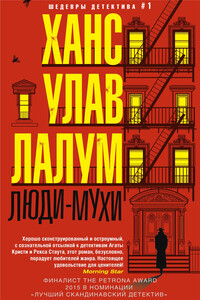
Убит бывший лидер норвежского Сопротивления и бывший член кабинета министров Харальд Олесен. Его тело обнаружено в запертой квартире, следов взлома нет, орудие убийства отсутствует. На звук выстрела к двери Олесена сбежались все соседи, но никого не увидели. Инспектор уголовного розыска Колбьёрн Кристиансен считает, что убийство, скорее всего, совершил кто-то из них. Более того, он полагает, что их показания лживы.
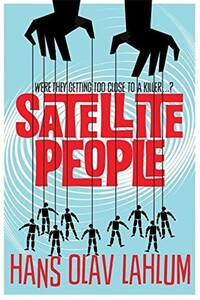
A gripping, evocative, and ingenious mystery which pays homage to Agatha Christie, Satellite People is the second Norwegian mystery in Hans Olav Lahlum's series. Oslo, 1969: When a wealthy man collapses and dies during a dinner party, Norwegian Police Inspector Kolbjorn Kristiansen, known as K2, is left shaken. For the victim, Magdalon Schelderup, a multimillionaire businessman and former resistance fighter, had contacted him only the day before, fearing for his life. It soon becomes clear that every one of Schelderup's 10 dinner guests is a suspect in the case.
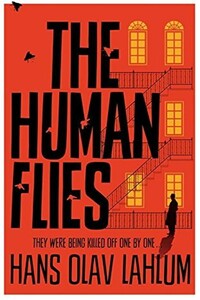
Oslo, 1968: ambitious young detective Inspector Kolbjorn Kristiansen is called to an apartment block, where a man has been found murdered. The victim, Harald Olesen, was a legendary hero of the Resistance during the Nazi occupation, and at first it is difficult to imagine who could have wanted him dead. But as Detective Inspector Kolbjorn Kristiansen (known as K2) begins to investigate, it seems clear that the murderer could only be one of Olesen's fellow tenants in the building. Soon, with the help of Patricia – a brilliant young woman confined to a wheelchair following a terrible accident – K2 will begin to untangle the web of lies surrounding Olesen's neighbors; each of whom, it seems, had their own reasons for wanting Olesen dead.
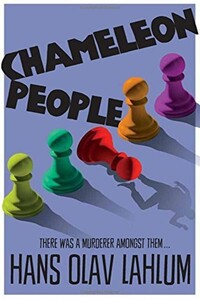
From the international bestselling author, Hans Olav Lahlum, comes Chameleon People, the fourth murder mystery in the K2 and Patricia series.1972. On a cold March morning the weekend peace is broken when a frantic young cyclist rings on Inspector Kolbjorn 'K2' Kristiansen's doorbell, desperate to speak to the detective.Compelled to help, K2 lets the boy inside, only to discover that he is being pursued by K2's colleagues in the Oslo police. A bloody knife is quickly found in the young man's pocket: a knife that matches the stab wounds of a politician murdered just a few streets away.The evidence seems clear-cut, and the arrest couldn't be easier.
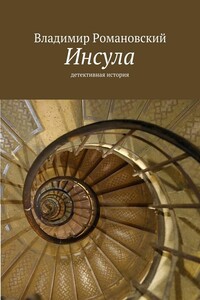
Детективная история, произошедшая в Санкт-Петербурге. Обычные люди в необычных обстоятельствах. Любовь, ненависть, жадность, драки и власть.
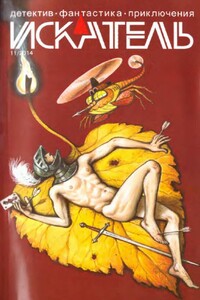
«ИСКАТЕЛЬ» — советский и российский литературный альманах. Издаётся с 1961 года. Публикует фантастические, приключенческие, детективные, военно-патриотические произведения, научно-популярные очерки и статьи. В 1961–1996 годах — литературное приложение к журналу «Вокруг света», с 1996 года — независимое издание.В 1961–1996 годах выходил шесть раз в год, в 1997–2002 годах — ежемесячно; с 2003 года выходит непериодически.Содержание:Анатолий Королев ПОЛИЦЕЙСКИЙ (повесть)Олег Быстров УКРАДИ МОЮ ЖИЗНЬ (окончание) (повесть)Владимир Лебедев ГОСТИ ИЗ НИОТКУДА.
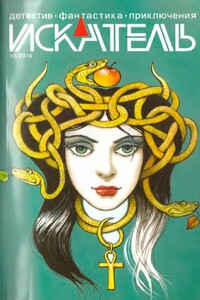
«ИСКАТЕЛЬ» — советский и российский литературный альманах. Издается с 1961 года. Публикует фантастические, приключенческие, детективные, военно-патриотические произведения, научно-популярные очерки и статьи. В 1961–1996 годах — литературное приложение к журналу «Вокруг света», с 1996 года — независимое издание.В 1961–1996 годах выходил шесть раз в год, в 1997–2002 годах — ежемесячно; с 2003 года выходит непериодически.Содержание:Олег Быстров УКРАДИ МОЮ ЖИЗНЬ (повесть);Петр Любестовский КЛЕТКА ДЛЯ НУТРИИ (повесть)
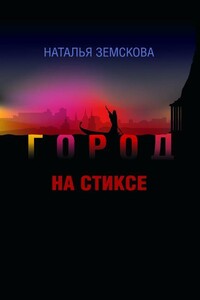
Наталья Земскова — журналист, театральный критик. В 2010 г. в издательстве «Астрель» (Санкт-Петербург) вышел её роман «Детородный возраст», который выдержал несколько переизданий. Остросюжетный роман «Город на Стиксе» — вторая книга писательницы. Молодая героиня, мечтает выйти замуж и уехать из забитого новостройками областного центра. Но вот у неё на глазах оживают тайны и легенды большого губернского города в центре России, судьбы талантливых людей, живущих рядом с нею. Роман «Город на Стиксе» — о выборе художника — провинция или столица? О том, чем рано или поздно приходится расплачиваться современному человеку, не верящему ни в Бога, ни в черта, а только в свой дар — за каждый неверный шаг.
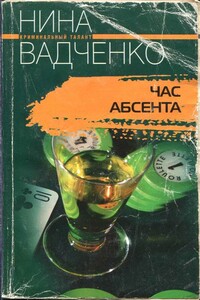
А ведь все так невинно начиналось! Четыре подружки коротали вечерок с бутылочкой «зеленого дьявола» и вели милую дамскую беседу о том… как бы им «грамотно» отправить на тот свет ненавистного шефа. Почему бы не помечтать о приятном в теплой дружеской компании? Все бы ничего, да только шефа вскоре действительно нашли мертвым, к тому же кто-то снял на видео посиделки четырех любительниц абсента. Впрочем, они и сами друг друга теперь подозревают. И распутать этот клубок противоречий по силам только их старой знакомой, неугомонной журналистке Инне Пономаренко…
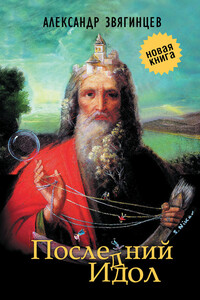
В сборник «Последний идол» вошли произведения Александра Звягинцева разных лет и разных жанров. Они объединены общей темой исторической памяти и личной ответственности человека в схватке со злом, которое порой предстает в самых неожиданных обличиях. Публикуются рассказы из циклов о делах следователей Багринцева и Северина, прокуроров Ольгина и Шип — уже известных читателям по сборнику Звягинцева «Кто-то из вас должен умереть!» (2012). Впервые увидит свет пьеса «Последний идол», а также цикл очерков писателя о событиях вокруг значительных фигур общественной и политической жизни России XIX–XX веков — от Петра Столыпина до Солженицына, от Александра Керенского до Льва Шейнина.